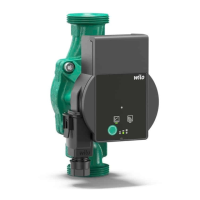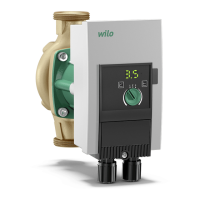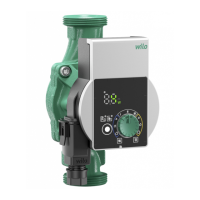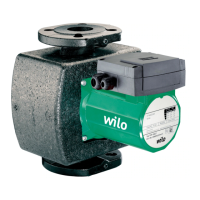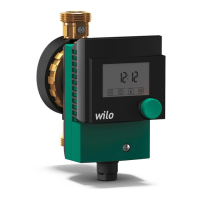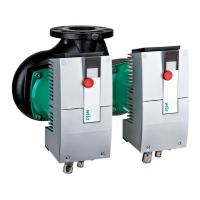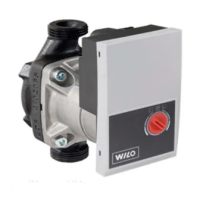en Installation and electrical connection
20 WILO SE 2019-04
hot fluids.
Adjustment may be required if the pump is required to pump very hot fluids:
• Allow the pump to run at the actual operating temperature.
• Switch off the pump then immediately check the alignment.
Precondition for reliable, smooth and efficient operation of a pump unit is proper align-
ment of the pump and the drive shaft.
Misalignments can be the cause of:
▪excessive noise development during pump operation
▪vibrations
▪premature wear
▪excessive coupling wear
6.7.1 Coupling alignment
Fig.11: Coupling alignment without spacer
Fig.12: Coupling alignment with spacer
1. Axial displacement (ΔKa)
▪Adjust the gap ΔKa within the permissible range of deviation.
Permissible deviations for dimensions S and S2, see table “Permissible gaps S and S2”
2. Angular displacement (ΔKw)
The angular displacement ΔKw can be measured as the difference between the gaps:
ΔS = S
max.
– S
min.
and/or ΔS2 = S2
max.
– S2
min.
The following condition must be met:
ΔS and/or ΔS2 ≤ ΔS
perm.
(perm. = permissible; ΔS
perm.
is dependent on the speed)
If required, the permissible angular displacement ΔKw can be calculated as follows:
ΔKW
perm.
in RAD = ΔS
perm.
/DA
ΔKW
perm.
in GRD = (ΔS
perm.
/DA) x (180/π)
(with ΔS
perm.
in mm, DA in mm)
3. Radial displacement (ΔKr)
The permissible radial displacement ΔKr
perm.
can be taken from the table “Maximum per-
missible shaft displacement”. Radial displacement is dependent on the speed. The nu-
merical values in the table and their interim values can be calculated as follows:
ΔKr
perm.
= ΔS
perm.
= (0.1+DA/1000) x 40/√n
(with speed n in rpm, DA in mm, radial displacement ΔKr
perm.
in mm)
Coupling size DA [mm] S [mm] S2 [mm]
68
68 2 ... 4 5
80
80 2 ... 4 5
95
95 2 ... 4 5
110
110 2 ... 4 5
125
125 2 ... 4 5
140
140 2 ... 4 5
160
160 2 ... 6 6
180
180 2 ... 6 6
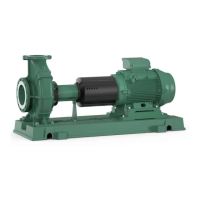
